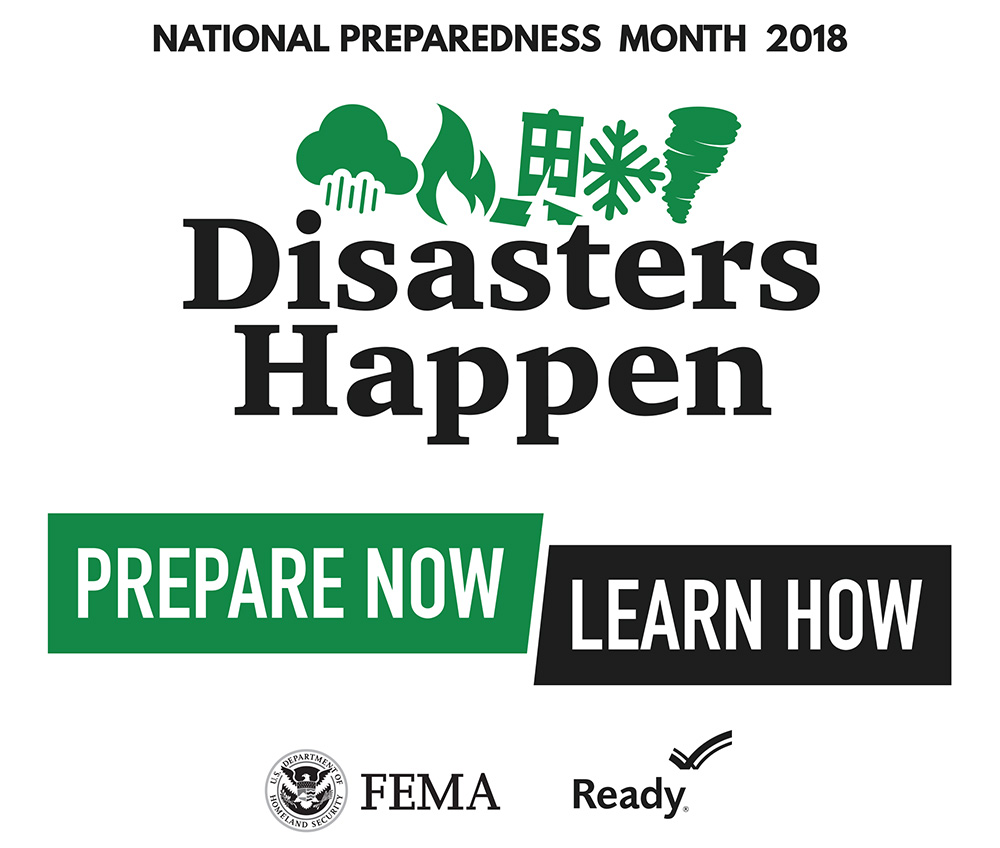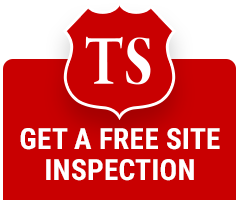 September is National Preparedness Month (NPM). This is a good reminder that natural and man-made disasters can affect anyone, anywhere at any time. It's important that you have a planned response when you're at work, on vacation or on the road and that this plan is shared with your family.
September is National Preparedness Month (NPM). This is a good reminder that natural and man-made disasters can affect anyone, anywhere at any time. It's important that you have a planned response when you're at work, on vacation or on the road and that this plan is shared with your family.
Whether it’s a house fire or a natural disaster, having a plan that everyone is aware of can drastically change the outcome of your emergency. In 2016 one home structure fire was reported every 90 seconds. While in 2017, 59,985 weather-related events resulted in 592 deaths and 4,270 injuries.
For the best disaster preparation make sure you have the following:
- Create a family communication plan and make sure all family members review and practice the plan consistently
- Have every family members and other important phone numbers written down
- Have an emergency kit in your car and at least three days worth of food and water on hand at your home
- Be sure to store all important documents – birth certificates, insurance policies, etc. – in a fireproof safe or safety deposit box
- Have your family take a first aid and CPR course
- Know how to shut off your utilities
Your family communication plan should be able to answer these 3 questions:
- How will I receive emergency alerts and warnings?
- What is my shelter plan?
- What is my evacuation route?
Because a disaster can strike during school or work hours, you need to make sure your family understands what to do if disaster happens when you are not at home. Discuss these plans with your children so they know who may pick them up in an emergency. Make sure all of your family’s phones are signed up for alerts and warnings from schools, workplaces, and/or local government. You should also identify someone from outside of your state who can act as a central point of contact to help your family reconnect if you become separated in the event of an emergency.
EMERGENCY MEETING PLACES
Decide on safe, familiar places where your family can go for protection or to reunite.
Indoor: If you live in an area where tornadoes, hurricanes, or other high-wind storms can happen, make sure everyone knows where to go for protection. This could be a small, interior, windowless room, on the lowest level of a sturdy building, or a tornado safe room or storm shelter.
Around your home: This is a place where your household members will meet if there is a fire or other emergency and you need to leave your home. The meeting place could be a big tree, a mailbox at the end of the driveway, or a neighbor’s house.
Your community: This should be a place your family can meet if a disaster happens when you’re not at home and you can’t get back to your home. Things such as a school, community center or a family friend’s home.
Outside of your town or city: Having an out-of-town meeting place can help you reunite if a disaster happens and you are instructed to evacuate the area. This meeting place could be the home of a relative or family friend. Make sure everyone knows the address of the meeting place and discuss ways you would get there.
OTHER IMPORTANT NUMBERS AND INFORMATION
You should also write down phone numbers for:
- Emergency services
- Utilities
- Service providers
- Medical providers
- Veterinarians
- Insurance companies
Save all family contact numbers and emergency contact information into everyone’s mobile phones. Store at least one emergency contact under the name “In Case of Emergency” or “ICE” for all mobile phones and devices. This will help someone identify your emergency contact if needed.
Inform your emergency contact of any medical issues or other requirements you may have.
Keep charged batteries, a car phone charger, and a solar charger available for backup power for your mobile phone.
Use the Internet to communicate by email, Twitter, Facebook, and other social media networks. These communication channels allow you to analyze information quickly from a specific audience and to help locate your friends and family who may also be affected by the emergency.
Once you have completed your Family Emergency Communication Plan, make copies for all the members of your household, discuss it and practice it regularly!

